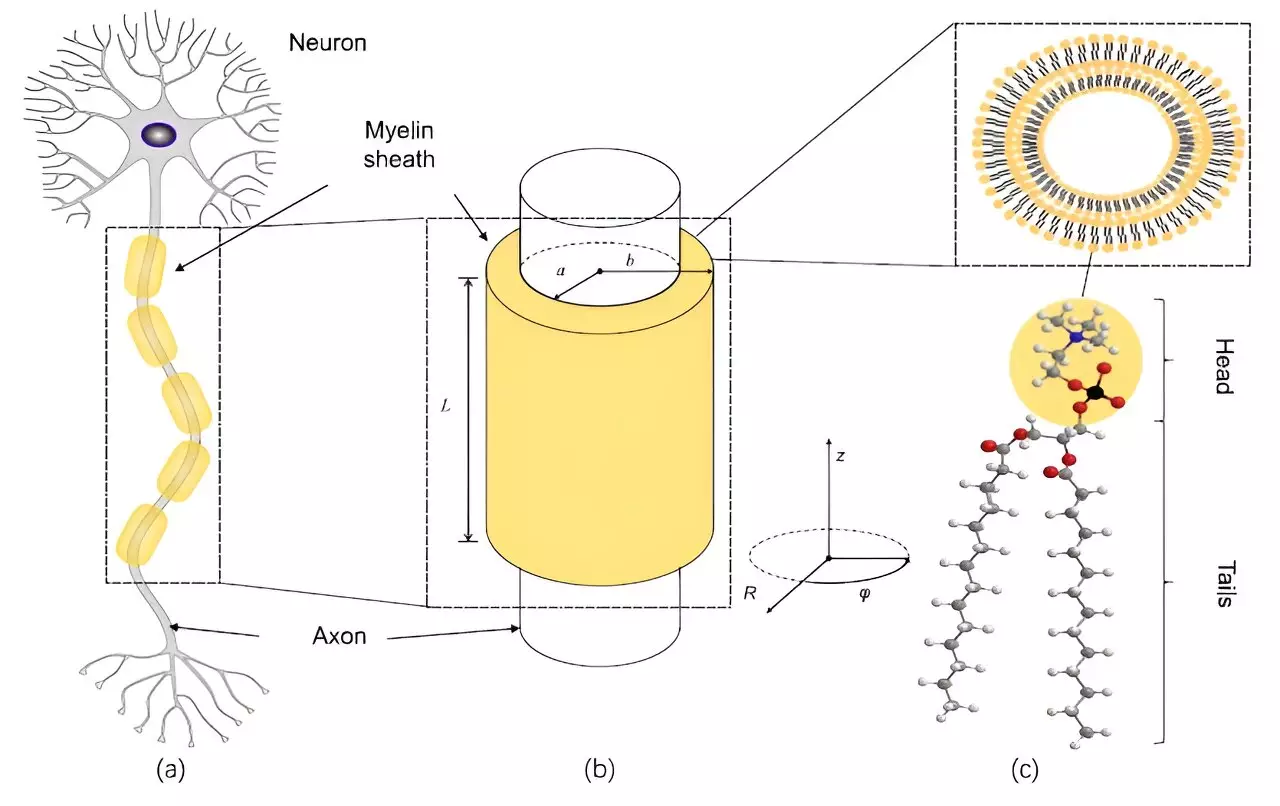Consciousness has long puzzled scientists and philosophers alike, categorizing it as one of the most elusive enigmas in modern science. Emerging from a complex network of neurons and synapses, consciousness is a phenomenon that raises fundamental questions about its nature and how brain functions translate to subjective experience. In recent times, some researchers have turned their gaze toward the curious realm of quantum mechanics, particularly the theory of quantum entanglement, hypothesizing that it may offer insights into the workings of consciousness. A groundbreaking study from a research team in China has taken a significant step in that direction, revealing the potential role of entangled photons within the myelin sheath surrounding nerve fibers.
Within the human brain, neurons serve as the primary communicators, relaying information through electrical signals known as synapses. These signals facilitate coordinated activity, essential for heightened cognitive functions and self-awareness. A longstanding mystery has surrounded how this intricate synchronization happens at lightning speed, given that traditional neural signaling has been observed to occur at speeds considerably less than the speed of sound. For years, researchers have grappled with understanding how millions of neurons can work in concert and exchange information almost instantaneously.
The myelin sheath—an insulating layer composed of lipids—surrounds axons (the long, thin projections of neurons) and plays a fundamental role in enhancing the speed and efficiency of signal transmission. This protective coating not only insulates the axons but also aids in energy delivery and structural integrity. However, the limitations of traditional neural communication speeds prompted researchers to explore alternative explanations for the rapid synchronization observed in neural functions.
Quantum Entanglement as a Communication Mechanism
In addressing the apparent paradox of slow axonal transmission and rapid neural synchronization, the research team, led by Professor Yong-Cong Chen, ventured into the theoretical possibilities afforded by quantum mechanics. Their study, published in the journal Physical Review E, suggests that entangled photons could serve as a medium for instantaneous communication across the myelin sheath. This radical idea stems from the quantum feature of entanglement, where pairs of photons can become correlated in such a way that the state of one photon can instantaneously affect the state of another, regardless of the physical distance between them.
Chen and his colleagues adopted a sophisticated approach known as cavity quantum electrohydrodynamics, creating a theoretical model of how entangled photons may be generated within the context of myelin-coated axons. Their findings indicate that the unique electromagnetic environment within the myelin sheath could facilitate a higher rate of photon entanglement, allowing these photons to serve as messengers for faster signaling between neurons.
The researchers employed the principles of quantum mechanics to quantify the electromagnetic fields and photons within a hypothetical cylindrical cavity—the myelin sheath itself. The model they created demonstrated that the discrete electromagnetic modes present within this cavity could lead to the frequent production of highly entangled photons, destined to enhance neural communication.
Significantly, they found that the interaction of these entangled photons could have implications for neural processes beyond mere signaling. The intertwining of entangled states might affect the behavior of potassium ion channels crucial for neuronal activity, hinting at the possibility that quantum entanglement could influence not just communication speed, but also the overall functionality of the neural networks.
The implications of this research extend into the broader conversation about consciousness itself. While the authors of the study are cautious not to draw direct correlations between quantum entanglement and consciousness as we understand it, they propose a tantalizing idea: that the mechanisms underlying neural synchronization may share foundational links with quantum phenomena. Chen remarks that this exploration represents a synthesis of two profound yet misunderstood areas—consciousness and quantum mechanics—the potential interplay between which could illuminate pathways in neuroscience that have remained largely enigmatic.
As this field of inquiry develops, the findings challenge traditional paradigms surrounding brain function and consciousness. The prospect that our brains may utilize principles from quantum mechanics to enhance communication between vast networks of neurons is not just revolutionary but could pave the way for future investigations into the nature of consciousness itself.
This groundbreaking study opens up exciting new avenues in our understanding of both consciousness and quantum mechanics. Given the nascent stage of research into the quantum aspects of brain function, further investigation is crucial to solidify the connection between entangled photons and neural processes. As scientists continue to peel back the layers of these complex interactions, we may come closer to deciphering one of the greatest mysteries of human experience: the nature of consciousness.


Leave a Reply